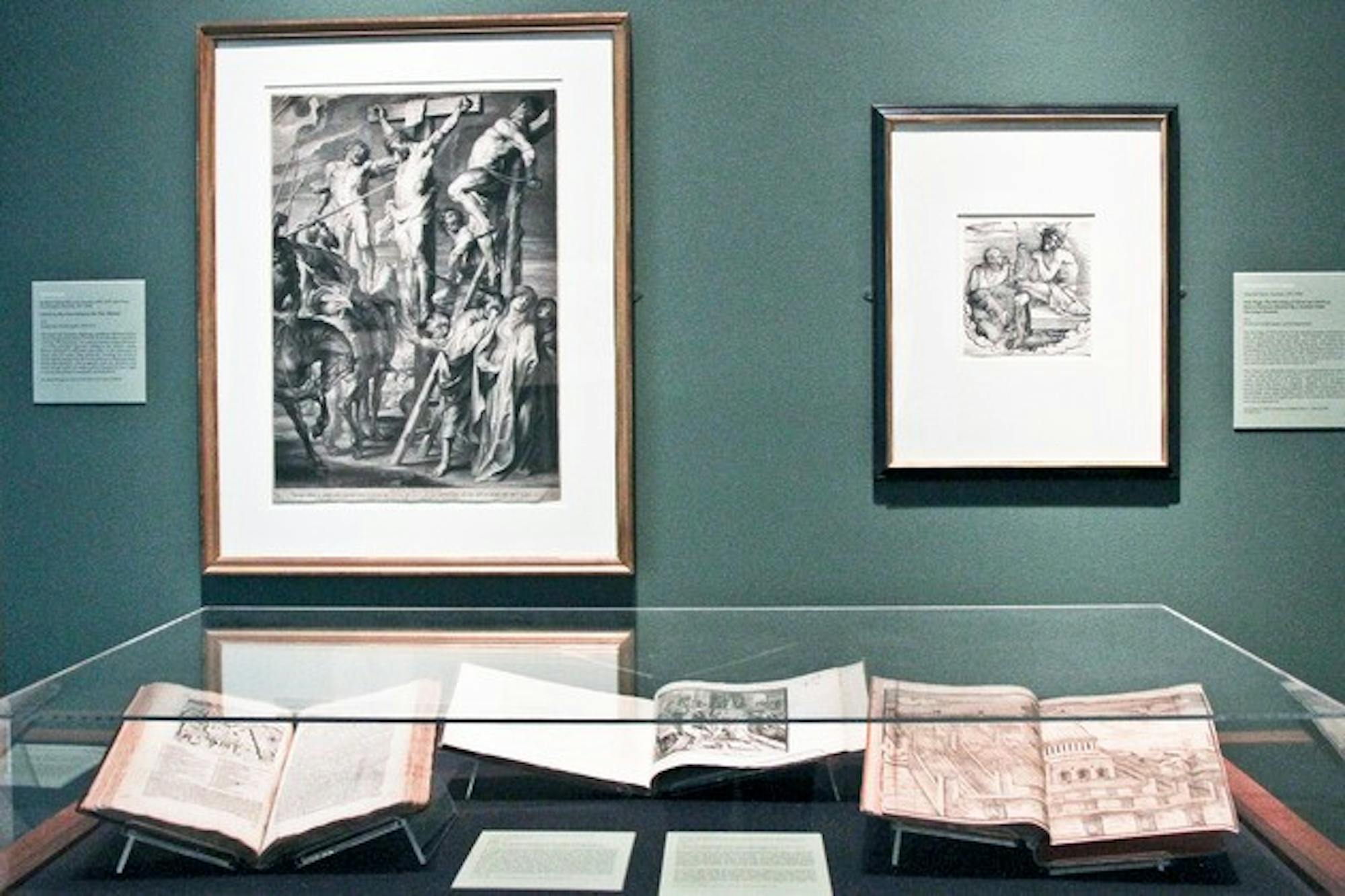Few people in the 16th and 17th centuries had the opportunity to visit the Holy Land, and the artists whose works are displayed in the exhibit were no different. Instead, they relied on their own imaginations to create visions of the events that took place in and around Jerusalem.
While some approached the scenes with more idealized interpretations, others incorporated elements of their own eras and surroundings. A Rembrandt print sets the scene of Christ being presented to the people against a backdrop of classical Dutch architecture, while a Drer woodcut of Christ's presentation includes the exact image of a church in Harlem, the Netherlands.
"These [works] show how different artists are looking at different scenes, having never been there," Hood Curator Bart Thurber said. "They're imagining it as a contemporary setting, or an idealized ancient setting."
The Passion is also rendered in a variety of ways by different artists. In particular, the scene of the crucifixion is depicted in various degrees of emotion one painting contains symbolic iconography such as Adam's skull, another embraces the intimacy of Christ and his disciple.
Rembrandt's etching of this scene, "Christ Crucified between the Two Thieves (The Three Crosses)," is a dynamic and engaging composition. Diagonal cuts extend across the print, creating a sharp contrast of light and dark. Christ, crucified on Mount Cavalry, is bathed in light while the furor of the crowd below him merges into blackness. The dramatic effect turns Christ into the physical and emotional focus of the piece.
"Although the artists had the narrative in front of them, they used their imagination, which I think is so compelling and intriguing," Thurber said.
Highlights of the exhibit include two fragments of a 15th century woodcut illustrating various scenes of the Passion of Christ against a topographical view of Jerusalem. As the earliest known depictions of the city, they are the only remaining pieces of a woodcut that, at 4 by 4 feet, would have formed the largest rendition of the Passion sequence in the 15th century.
The fragments acquired by the Hood in 2009 and several related art history classes offered this term were the impetus for assembling the exhibit, Thurber said.
"You get this wonderful synchronic aspect of showing episodes of martyrdom of both Christ and the disciples," Thurber said. "What I like so much is that these prints, while only fragments, help give us a key to how people looked at Jerusalem as a holy site."
The fragments, most likely hand printed by an unknown German artist, identify and contain inscriptions of the major sites of Christ's passage through Jerusalem. These inscriptions are notably written in the vernacular language, not Latin. They not only aided travelers to the city but also conveyed the journey to those who could not make the trip themselves, creating a sort of imagined pilgrimage. They were placed in a convent or church and were easily disseminated through the recently invented printing press.
"Although prints could be reproduced and multiplied, they were a mode of expression, just like paintings," Thurber said. "Most of these artists [here in the exhibit] were painters as well, and how an artist can conceptualize in paint and in etching tools is just amazing."
The exhibit is organized according to the events of the Passion of Christ, beginning with Christ's entrance into Jerusalem. The exhibit concludes with the crucifixion, with an entire wall given to several artists' interpretations of the culminating event.
Paintings of other scenes from the Bible are also included in the exhibit, such as Rembrandt's "Adam and Eve" and "Abraham's Sacrifice."
"These artists are using Old Testament references to reconstruct what the Temple of Solomon looked like," Thurber said. "It's about how we interpret urban fabric and major cities."
Illustrated books printed in the 15th and 16th centuries were borrowed from Rauner Special Collections Library and are on display as well, some showing idealized reconstructions of major religious and historical sites. These books tell us about more than just Jerusalem's importance as a historical or devotional site, Thurber said, because they also expose the city's representations in encyclopedias from over 500 years ago.
"Envisioning Jerusalem" opened in the Harrington Gallery at the Hood Museum on April 9 and will be on display through June 19.




